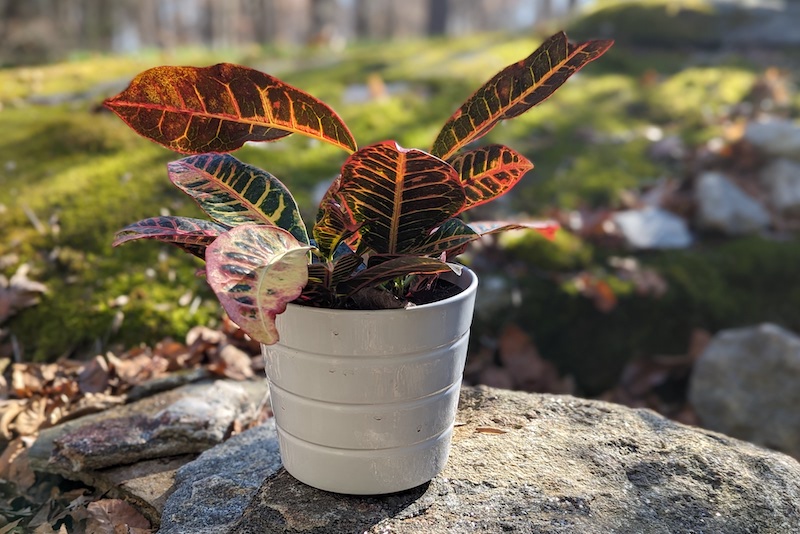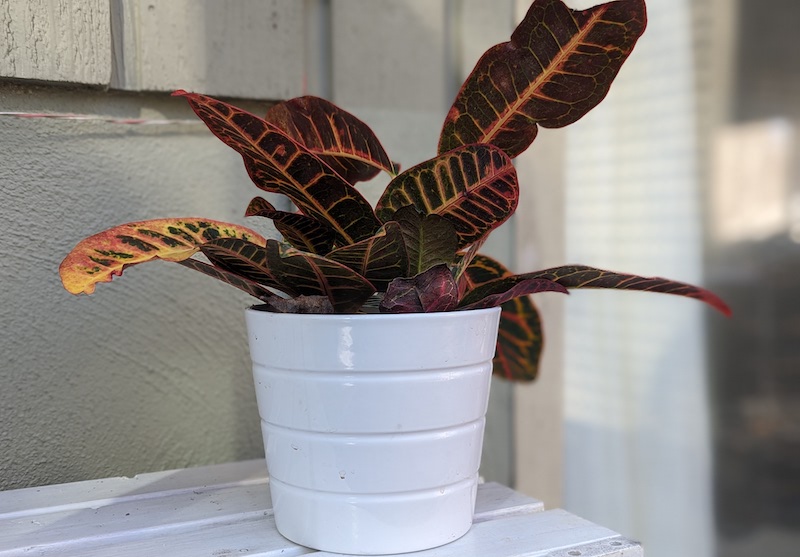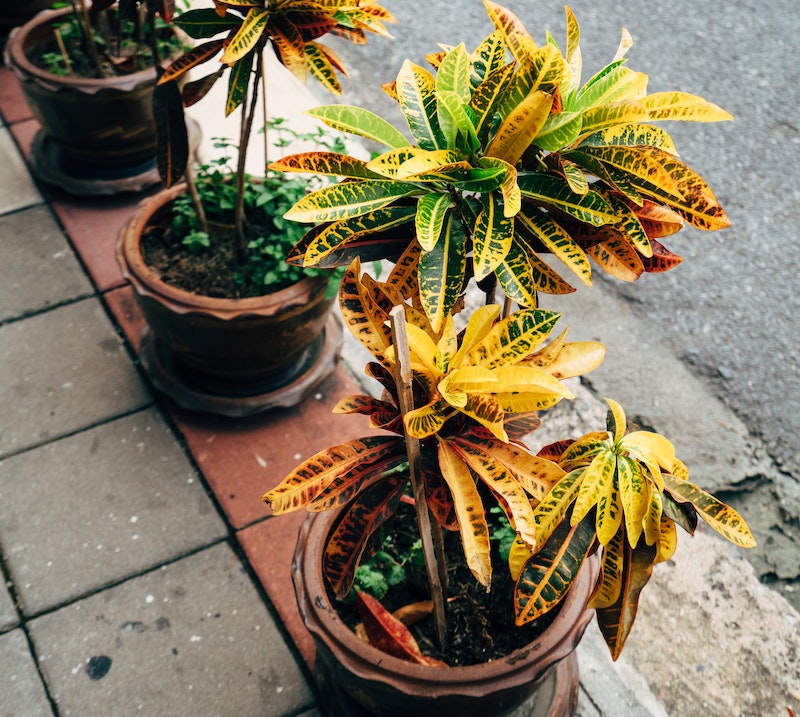Croton, Codieaum variegatum, is a tropical plant native to Malaysia, Australia, and other parts of the South Pacific. It appreciates high humidity and a temperate climate to grow vigorously and display the vivid colors it is renowned for. The USDA growing zones that best match Croton’s preferred climate are 11-12, which include the Hawaiian islands, Puerto Rico, and southern Florida. Elsewhere in the United States, Croton can be successfully grown as a houseplant, moving the plant outdoors to decorate a patio, deck, or balcony during the summer months.

When To Put Croton Outside
Croton benefits from being grown outdoors during the summer. The brighter light levels and access to natural rainwater promote vigorous growth. The right time to move your Croton outdoors is when the nighttime temperatures are reliably above 50-55 degrees Fahrenheit. This is also the same time to plant outside tomatoes, peppers, eggplants, and any other hot-season edible plants.
When To Bring Croton Indoors
When to bring houseplants inside for the fall is a little more difficult to judge. Nighttime temperatures can fall rapidly. Look at the weather forecast for any nights below 55 degrees F, and start preparing your Croton for indoor living. Placing the plant close to the house in a sheltered spot is ideal to give it a few days of quarantine. This allows you to determine if it suffers from any pests or diseases that will need to be treated before coming indoors. A shadier location next to the house also prepares the plant for the naturally lower levels of light indoors. Ideally this period of ‘reverse hardening off’ will be at least one week.

Caring For Croton Outdoors
Outdoor life for a Croton plant looks very different from its growing conditions indoors. The plant grows as a medium-story plant in tropical jungles and thrives in partial sun or a dappled sun location under an arbor, near taller growing shrubs and trees, or in a location with full sun early or late in the afternoon. Full sun during the hottest parts of the day will scorch the leaves. Protect Croton from heavy downpours or storms when growing outside. Make sure to move it to a sheltered location in the case of summer storms. Ensure that the container is well draining and that the potting mix stays consistently moist without being boggy or soggy. Watering will need to be checked on frequently. Often every day during periods of high temperatures or low humidity. Low humidity outdoors can lead to infestations of Spider Mites. Check and treat any plant before it is brought indoors. Many outdoor pests can spread quickly indoors where plants are placed closer together.

 |
Author Robbin Small - Published 11-14-2023 |
